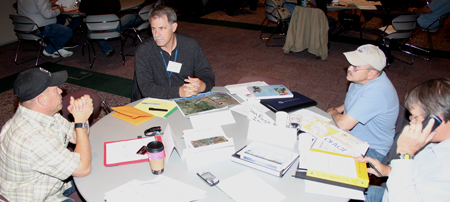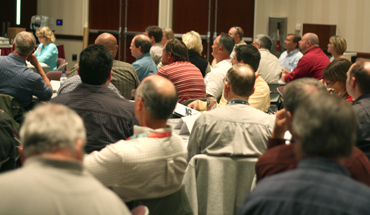
| CONNECTIONS |
IDAHO
ITD
HOME
511 TRAVEL SERVICES
IDAHO
DMV
ITD
NEWS
HIGHWAY
SAFETY
IDAHO STATE POLICE
STATE OF IDAHO
NIATT
NATIONAL
AASHTO
AAMVA
AAA of IDAHO
FEDERAL HIGHWAYS
FEDERAL AVIATION
IDAHO STATE POLICE
NHTSA
NTSB
TRB
U.S. DOT
TRANSPORTER
Archives
Milestones
Comments
Idaho
Transportation
Department
Office of Communications
P.O. Box 7129
Boise, ID 83707
208.334.8005
Fax: 208.334.8563


ITD participates in major disaster exercise
Representatives from public and private organizations throughout the Treasure Valley, including ITD, assembled in Boise this week to address the threat of dam failures as a result of a hypothetical earthquake near Stanley.
The training exercise was based on an earthquake of 5.3 magnitude on the Richter Scale, continuing aftershocks, major structural damage to downtown Boise and the Glenwood Bridge, weather forecasts of steady rain, and the possible failure of Arrowrock Dam.
 Staff from the U.S. Department of the Interior’s Bureau of Reclamation designed the exercise scenario with help from outside volunteers. ITD’s Bryan Smith served as one of the event “controllers” to monitor responses.
Staff from the U.S. Department of the Interior’s Bureau of Reclamation designed the exercise scenario with help from outside volunteers. ITD’s Bryan Smith served as one of the event “controllers” to monitor responses.
The Bureau of Reclamation has authority for Anderson Ranch Dam, Arrowrock Dam and the Boise River Diversion Dam, all east of Boise. The bureau’s Pacific Northwest Regional Office is in Boise. It is charged with conducting similar “functional” exercises every six years.
Among 90 participants from 27 agencies were ITD’s Smith, Louie Albright, Dan Bryant (District 3) and Mel Coulter. They were responsible for addressing transportation-related responses to the mythical calamity. Responses included:
-
Evacuation and relocation of ITD Headquarters and District 3 staff
-
Inspection of bridges and the transportation infrastructure throughout southwest Idaho
-
Implementing a request for “contra-flow” on Interstate 84 and I-184 that reverses the traffic flow on incoming lanes and move all traffic out of the Boise area
-
Rerouting interstate traffic around the Treasure Valley and
-
Coordinating external communications
The exercise included a scenario briefing on Tuesday, a Wednesday morning exercise with “injects” of new or changing conditions, and an afternoon “hot-wash,” a debriefing and roundtable discussion of the responses.
Published 5-8-09